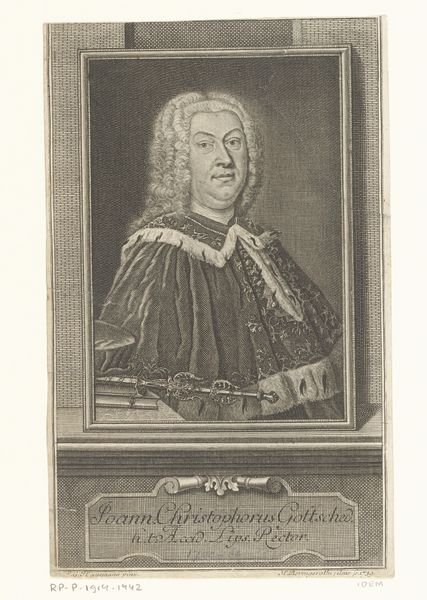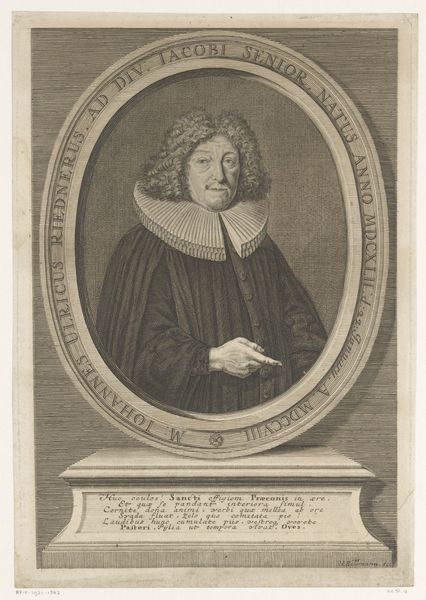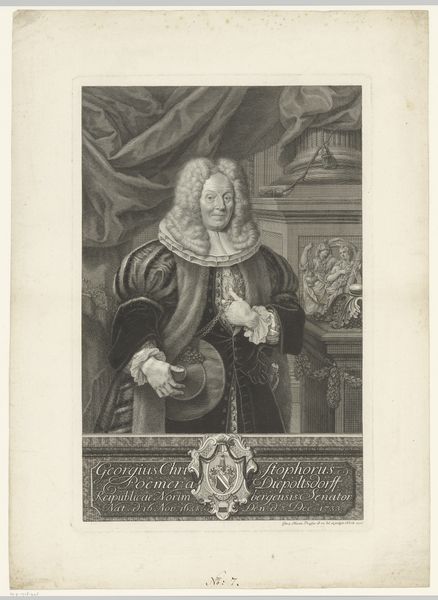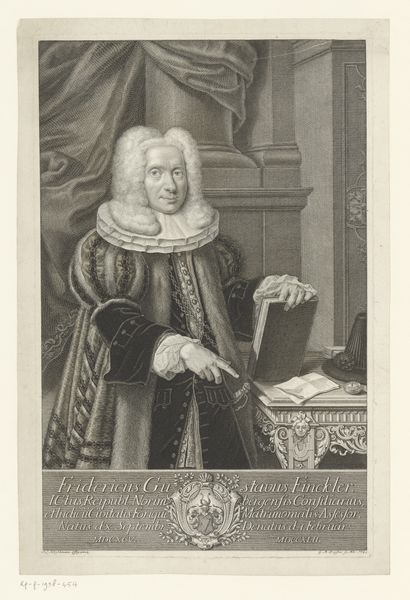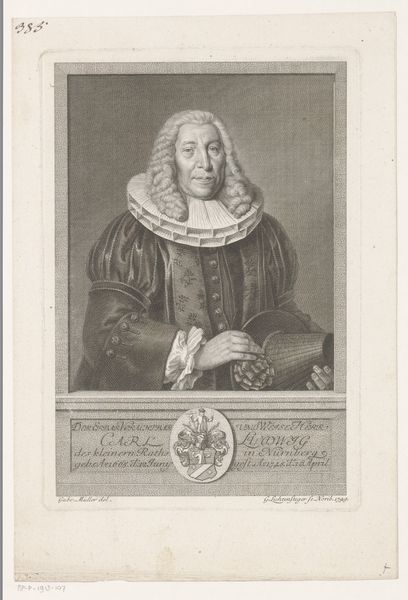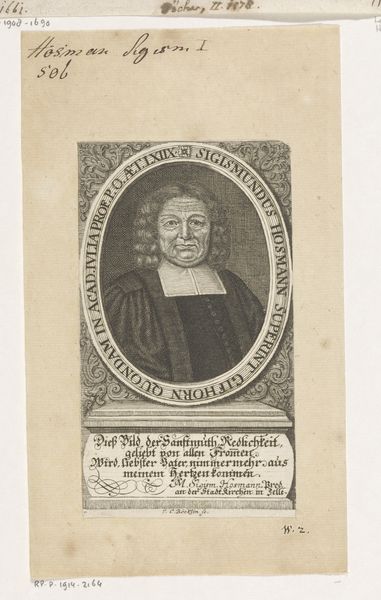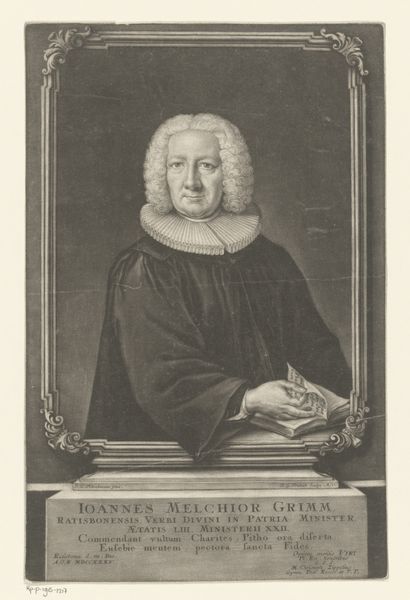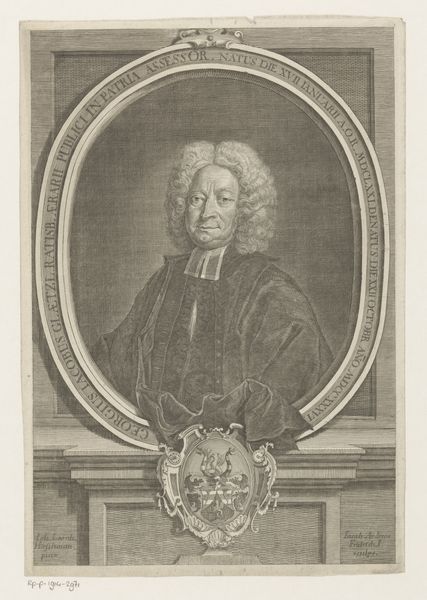
engraving
#
portrait
#
baroque
#
history-painting
#
engraving
Dimensions: height 503 mm, width 344 mm
Copyright: Rijks Museum: Open Domain
Editor: Here we have Georg Martin Preissler's "Portret van Ulrich Sebastian Fürer von Haimendorf," an engraving from 1754, held at the Rijksmuseum. It's a stately portrait; the subject’s gaze is very direct. What draws your eye, and how do you interpret this work? Curator: My attention is immediately drawn to the elaborate collar. Notice how it isolates the head, almost presenting it as an object of scrutiny? That ruff is like a halo, drawing us into the sitter's gaze, inviting judgment while simultaneously declaring his status. And just below we have his coat-of-arms, linking us to genealogy and generational lineage. Editor: That’s fascinating, like he's presenting himself both as an individual and a member of his family and class. Does the frame surrounding the image carry any specific cultural context for the viewer at the time? Curator: Indeed. The frame is part of the symbolic language. The architectural frame and Latin text act like a proscenium, presenting this man as a figure on a historical stage. Notice how it imitates stone—immutable, everlasting? It’s designed to project authority. Editor: It really does give a sense of permanence. Curator: Consider how the print medium contributes. Engravings like this democratized portraiture. This image could circulate, carrying the sitter's persona far beyond his physical presence, embedding his image within a wider cultural memory. How do you think this affects our viewing of the work? Editor: I think understanding that the print wasn't just about vanity, but about projecting an image, makes me see it differently. It's not just a likeness; it's a statement. Curator: Precisely! The layering of symbols and the act of dissemination contribute to a richer understanding of both the sitter and the society he inhabited. The cultural memory lives on!
Comments
No comments
Be the first to comment and join the conversation on the ultimate creative platform.


